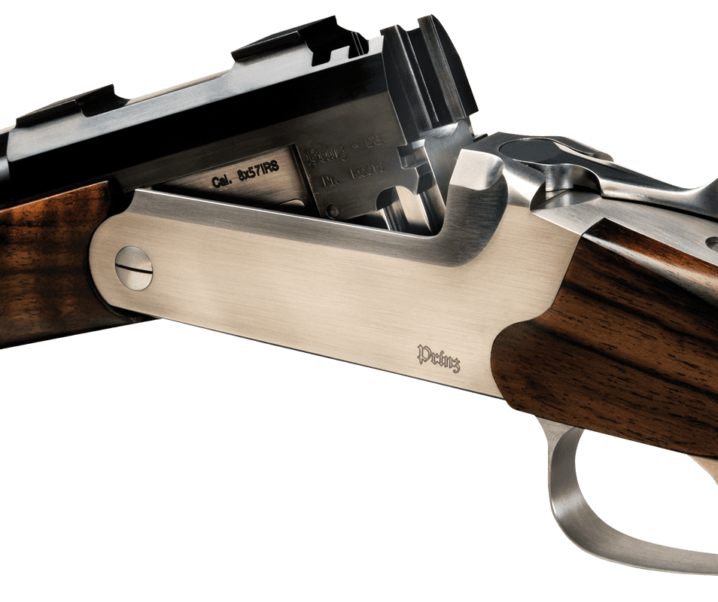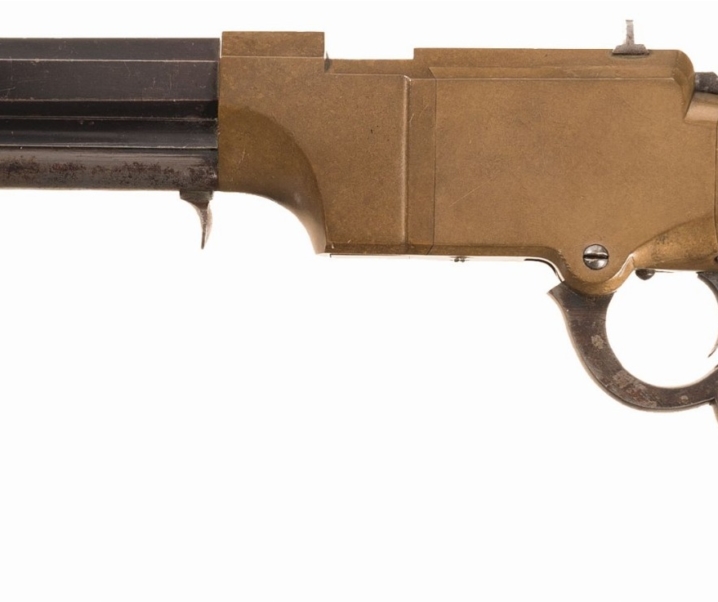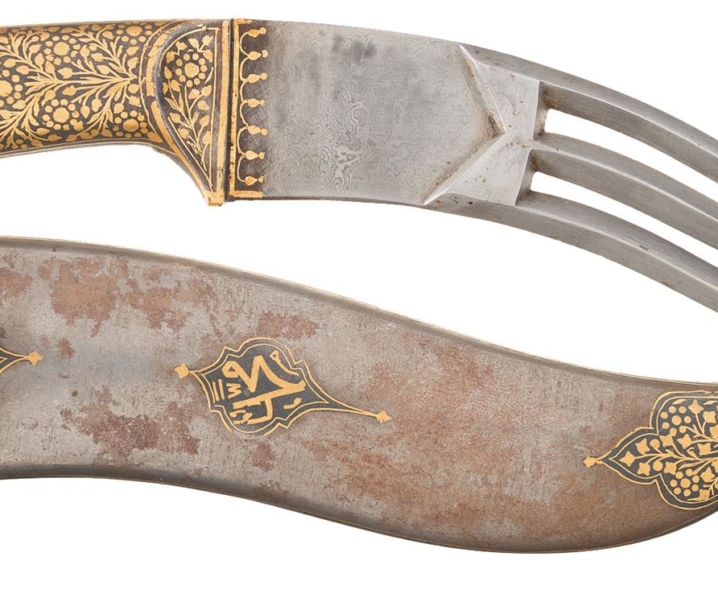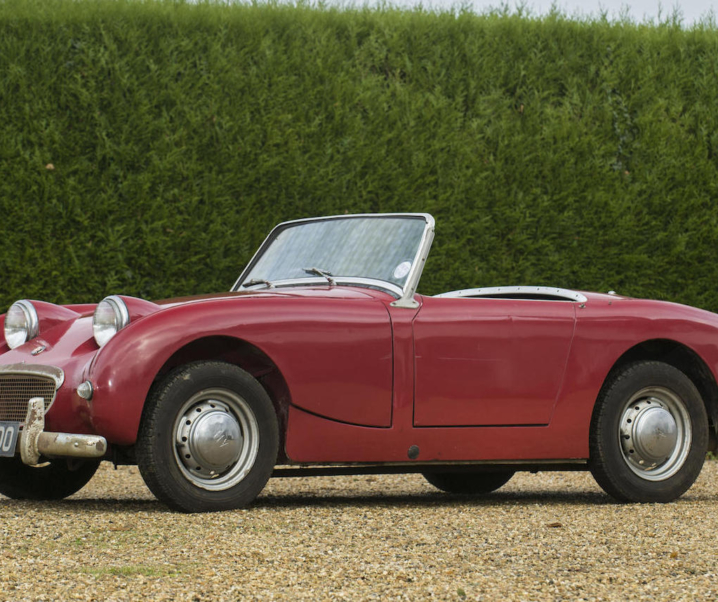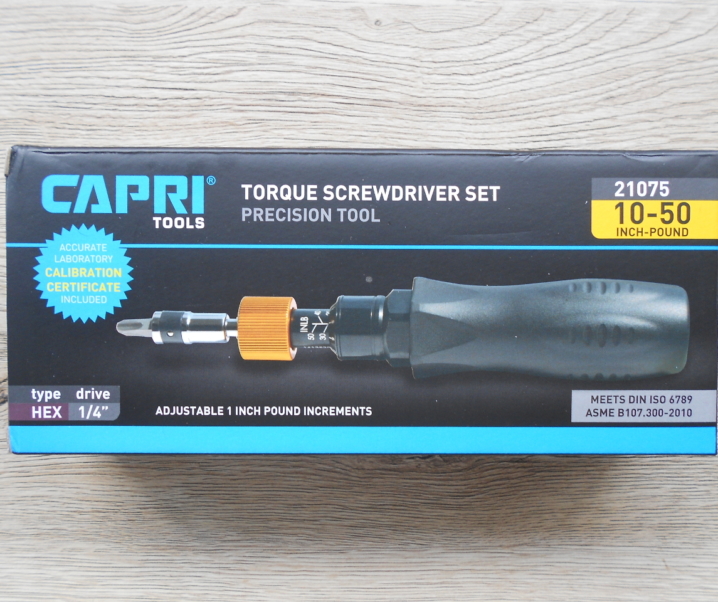Straight Pull Rifles: Background
Although straight pull rifles have been around for well over a century they have only tended to really become popular in Europe, and not the United States, Canada, Africa or Australia. American James Paris Lee was father not only of the Lee-Enfield rifle but also of the Lee Straight pull rifle of 1895, a rifle that was standard issue to both the US Navy and Marine Corps and which served well. In Europe Ritter Von Mannlicher created straight pull rifle designs of 1890 and 1895 and these were standard issue rifles to the military of the Austro-Hungarian Empire. Perhaps the rifle that soured Americans and Canadians to the straight pull rifle was the Ross Rifle of 1903, whose shortcomings did not become painfully evident until they were exposed to the mud and crud of the trenches of the First World War. It should be noted that the early Ross rifles exhibited poor standards of quality control, and once that set of problems was corrected the design was updated to the Mark III version. The Mark III’s bolt contained a new defect however, it could be reassembled incorrectly, which would then allow the rifle to fire a cartridge when it was not locked closed. This would result in the bolt being blown backwards into the hapless shooter’s face which was not a happy experience.
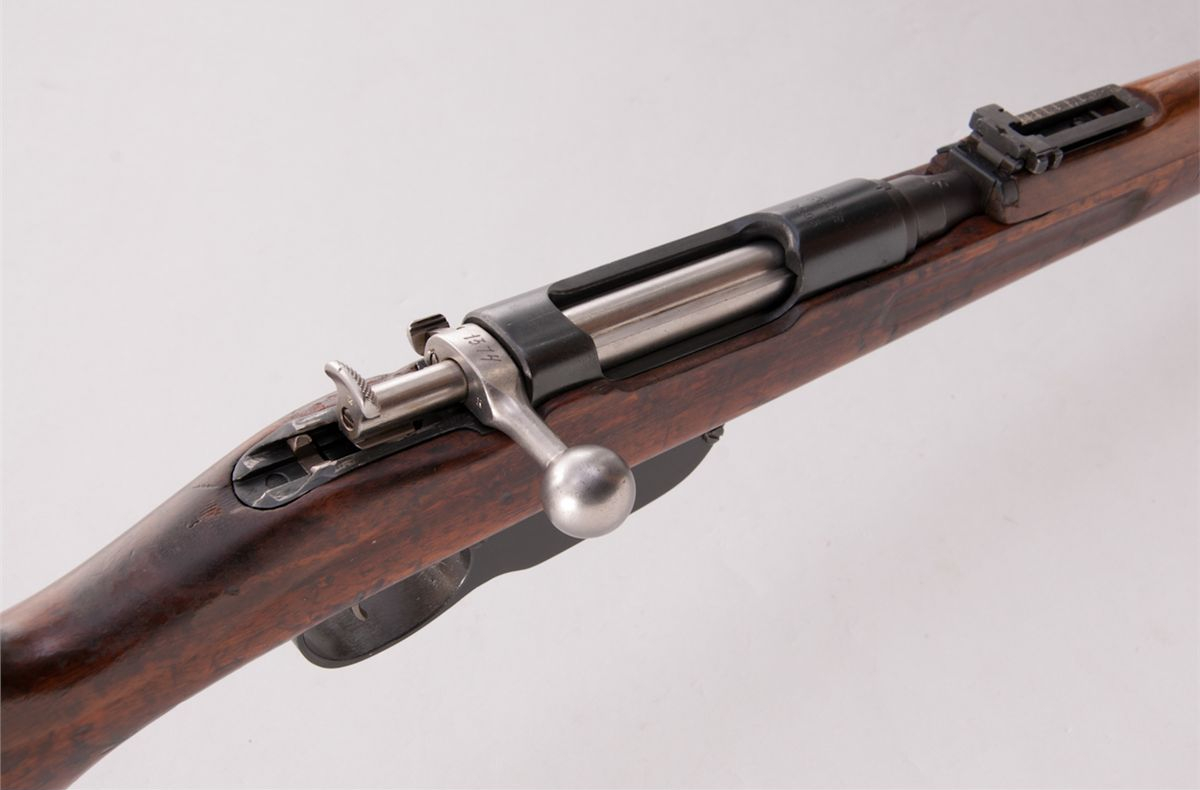
The problems with the Ross rifle were by no means to be found in the Mannlicher straight pull rifles (which Ross mostly copied to create his design). The Mannlicher straight pull rifles survived the exigencies of First World War trench warfare and proved themselves to be reliable and accurate arms. It may be that the bad reputation of the Ross in part accounts for the lack of straight pull rifles on the gun racks in the United States and Canada: whilst the good reputation of the Mannlicher straight pull rifles has meant that there are lots of them on European gun racks, and quite a number of new straight pull rifle models have been made by European manufacturers, especially in the last twenty years, such as the Mauser M96 and the Browning Maral for example.
One of the best of the European straight pull sporting rifles however is the Heym SR30.
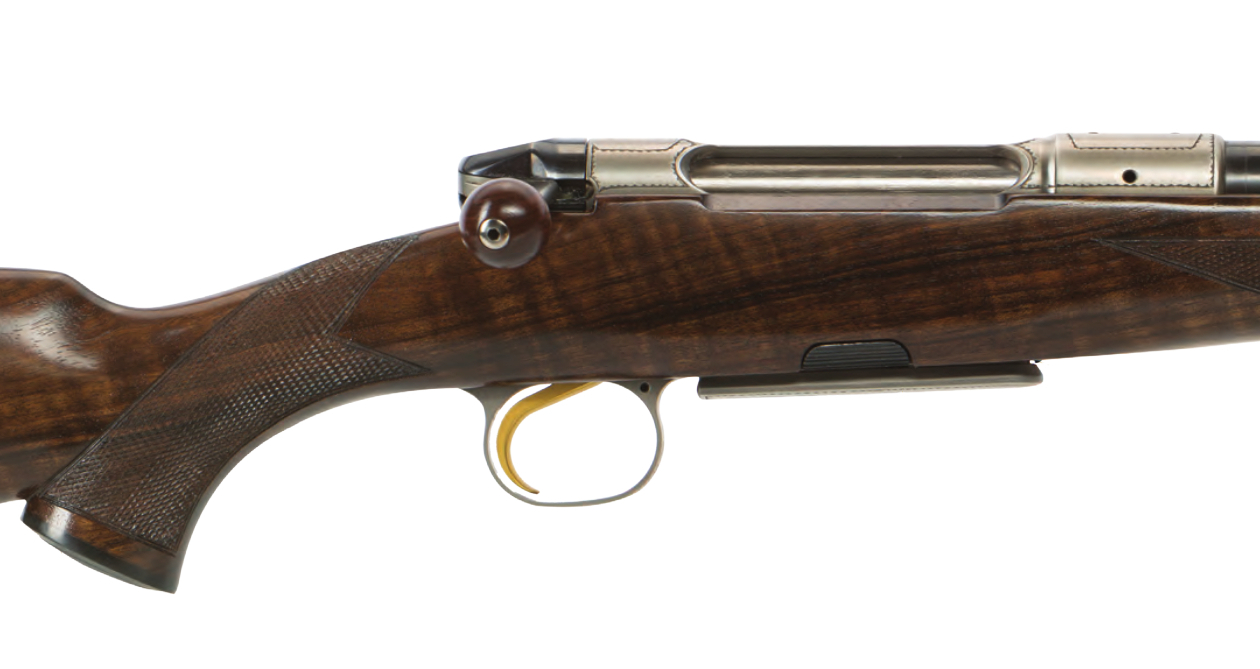
Heym SR30 Straight Pull Bolt Action Rifle
The Heym SR30 made its debut in 1998, three years after the company moved from its old factory at Münnerstadt to Gleichamberg, in Thuringia, Germany. This new straight pull rifle action uses the common pattern for straight pull bolt actions wherein the bolt is comprised of an outer sleeve with an inner bolt. In the case of the SR30 the inner bolt has cams at its breech end that engage ball bearing locking lugs and force them outwards into a groove in the action about 15mm from the bolt face. These “ball bearing” locking lugs make this a strong front locking action: the principle is much the same as that of the push button sling swivels which use the same ball bearings locking into a groove principle to attach to their bases in the rifle-stock. An additional advantage to this system is that the cam applies an even pressure to each of the ball bearing locking lugs ensuring a concentric and consistent bolt lock-up. The system is very strong, so strong that Heym have successfully tested it at 110,000psi pressure, which is about double the 55,000psi pressure of a typical full power rifle cartridge.
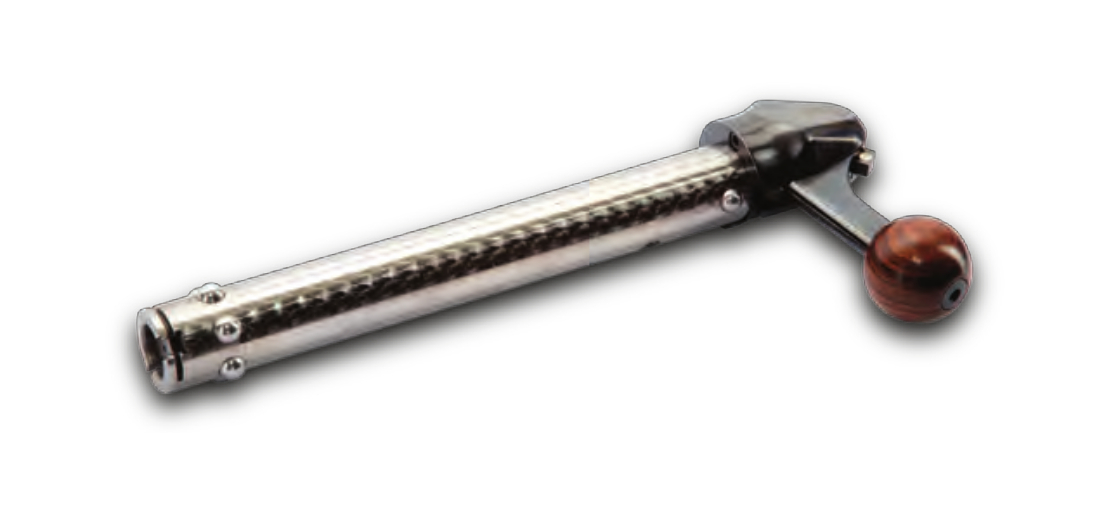
In operation the SR30’s action is kept safe, simple, and instinctive. To open the action the shooter pulls back on the bolt handle, this unlocks the action and allows the bolt to be retracted. To close the action the bolt is pushed forwards, and if it is pushed fully home the action will lock, and then cock ready to fire.
The bolt handle is not pushed fully home when the shooter only wants to close and lock the action, but not cock it. When the bolt is closed there is a middle bolt handle position in which the action is locked shut, but not yet cocked. This is the safe carry position and in this state the cross-bolt safety catch located on the rear of the bolt shroud can be engaged. With the safety catch in the “safe” position the action is locked closed and the bolt handle is locked in position, so the striker cannot be cocked, the striker is retained in a withdrawn position away from the cartridge primer, and so the rifle is safe to carry and cannot be fired.
When the shooter wishes to fire he/she thumbs the safety catch to the left which shows a red dot: this unlocks the bolt handle so the rifle can be cocked when desired. The rifle is not yet cocked however, and remains safe to carry “at the ready”. When the shooter is ready to take the shot he/she simply pushes the bolt handle full forward, just as one would push a conventional safety catch forward, and presses the trigger. Pushing the bolt handle fully forward is what cocks the striker so the rifle can be fired. To de-cock the action it is only necessary to pull the bolt handle back to the middle position.
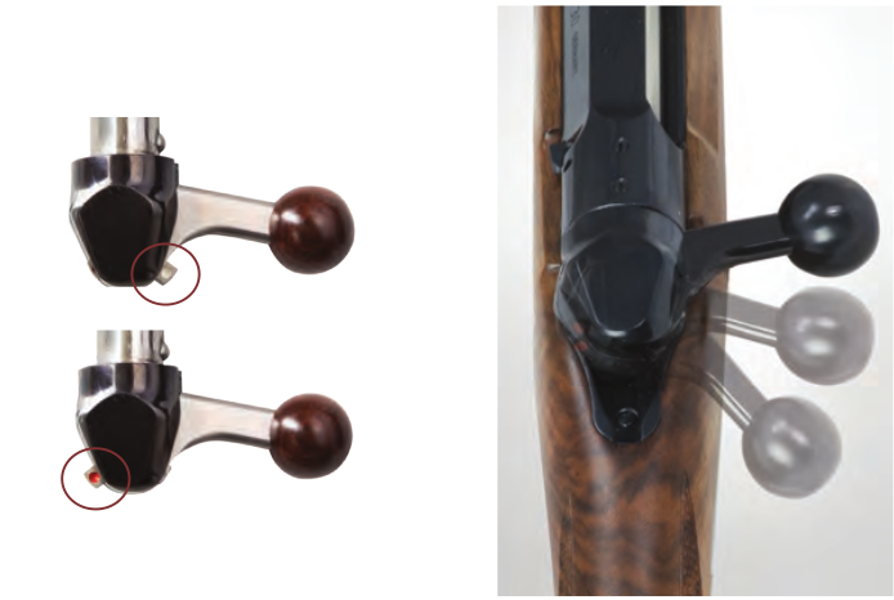
Because a straight pull rifle action is fast and instinctive to use there needs to be an easy and instinctive safety mechanism to ensure the shooter has certain and absolute control. The Heym engineers have ensured this on the SR30 by using a three position bolt system, supplemented by a manual safety catch.

This system is easy and instinctive to use, and provides both a very high degree of safety with a high degree of convenience. As can also be appreciated the Heym SR30 action cannot be cocked, much less fired, unless the action is safely locked closed. So it is absolutely not able to commit the sins the Ross Mark III was capable of.
You will find the full owner’s manual for the Heym SR30 if you click here. The English language section begins on page 13.
The chief advantage of a straight pull bolt action is of course that it is significantly easier and faster to fire a second or third aimed shot when required. A bolt action rifle requires four movements to reload and fire (i.e. bolt handle up, bolt back, bolt forward, and bolt handle down). Coordinating those movements whilst keeping the rifle at the shoulder and maintaining a stable sight picture is not the easiest thing to accomplish. But just as a lever action and a pump action make cycling the action and keeping the sight picture easy because there are only two movements required, so the straight pull rifle action provides the same thing. It is easy to keep the rifle at the shoulder, keep the sight picture, and simply work the bolt handle back and forwards. It is not quite as quick as a lever action or pump, but it’s easier and quicker than a conventional bolt action. The other advantage is that the straight pull bolt action provides the same level of accuracy as a conventional bolt action, and it provides the strength to handle full power bottleneck rifle cartridges.
Models and Specifications

The Heym SR30 is made in a variety of models both right and left handed to suit different needs and hunting situations: this includes models for long range precision hunting, deer hunting, big game, and the driven hunt. To add to the flexibility of the rifle the SR30 features an interchangeable barrel system. This system is a little different by comparison with those of other makers because in the Heym system the barrel and receiver unit is interchanged whilst the bolt and trigger remain the same. Interchangeability is limited to calibers in the same grouping: these groupings being the SR30N (N standing for “Normal” calibers such as the 30-06, 9.3×62 and the 7×64 Brenneke for example), and the SR30G (G standing for “Grosse” calibers which means large or magnum calibers such as the 7mm Remington Magnum, 8×68, or the new .375 Ruger).
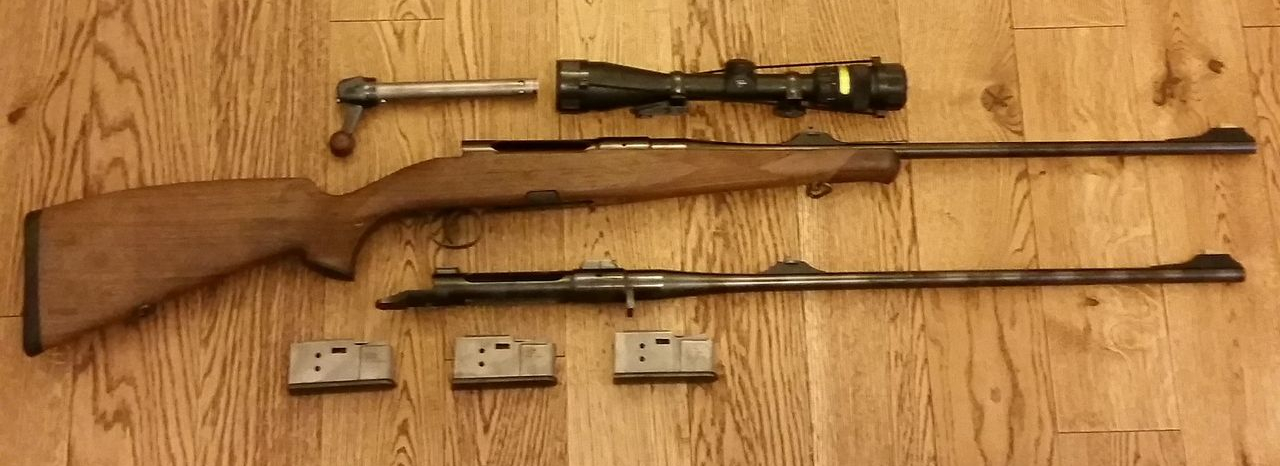
Calibers
SR30N: The Heym SR30N models are available in .22-250, .243 Winchester, 25-06, 6.5x55SM, 6.5×64, .270 Winchester, 7×57, 7×64 Brenneke, .308 Winchester, 30-06, 30-06 Ackley Improved, 8x57JS, 8x64S, 8.5×63, 9.3×62.
SR30G: The Heym SR30G models are made in “magnum” calibers as follows: 6.5×68 “Schuler”, .270 Winchester Short Magnum, .300 Winchester Short Magnum, 7mm Remington Magnum, .300 Winchester Magnum, 8x68S, .338 Winchester Magnum, .375 Ruger.
Magazines
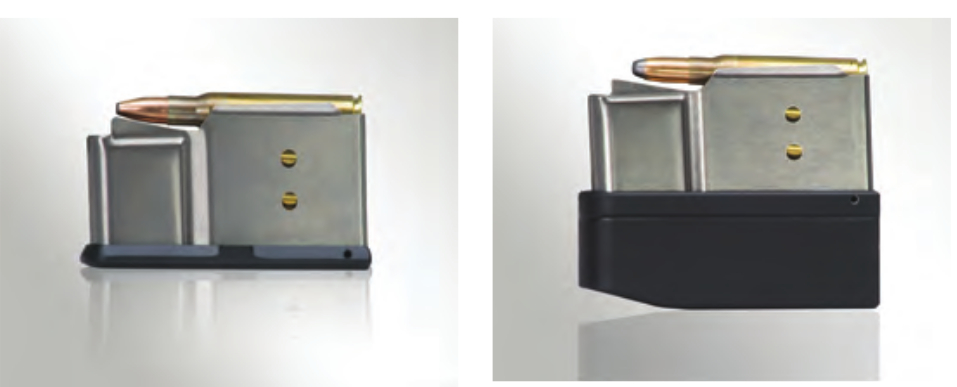
Heym offers both standard capacity and extended capacity magazines for the SR30 rifles. The Heym magazines are single column and have cartridge retention at the shoulder to ensure that soft pointed bullets are not deformed during recoil. In the SR30N normal calibers the standard magazine holds three cartridges and the extended magazine holds five cartridges. In the SR30G magnum calibers the standard magazine holds two cartridges and the extended magazine holds four.
Trigger
The SR30 has two trigger options; a single “shotgun” style trigger, or a single stage set trigger as is common on many European rifles. The single “shotgun” style trigger breaks cleanly at about 3.5lb. For the single set version when the trigger is simply pulled the release is crisp and of about 2.5lb weight. To set the trigger it is pushed forwards, it is then set for a light weight release.
Heym High Performance Precision Rifle

As an illustration of the accuracy of the SR30 straight pull action, Heym USA have the Heym High Performance Precision Rifle available with either the SR30 straight pull action or the SR21 turn bolt action. The Heym High Performance Precision rifle comes guaranteed to deliver five consecutive shots into a 20mm group at 100m. This rifle comes as a package complete with a Schimdt & Bender “Precision Hunter” rifle-scope and is available in .308 Winchester, 7mm Remington Magnum and .300 Winchester Magnum. The barrel is a hammer forged 26″ Krupp made by Heym at their factory, and the rifle tips the scales at 8lb.
You will find full information on the Heym USA website if you click here.
Heym SR30 Classic and Classic Keiler

The Heym SR30 Classic is the standard base model. It comes in either SR30N in standard calibers or SR30G for magnum calibers. The rifle features standard open sights and is drilled and tapped for rifle-scope mounts.
Barrel length is 22.8″/58cm for the SR30N and 24″/61cm for the SR30G. Approximate weight is 3.1kg. The SR30 Classic is supplied with the above illustrated straight stock or optionally with a Bavarian style.

The SR30 Classic Keiler is a short version of the classic fitted with open sights for quick instinctive shooting. Barrel length is 19.7″/50cm for the SR30N and 22.8″/58cm for the SR30G. Weight is listed as approximately 6.8lb/3.1kg although with its shorter barrel the Classic Keiler will be slightly lighter and quicker handling than the Classic. This model is also optionally available with a Bavarian style stock.
Heym SR30 Premium

The SR30 Premium features a slightly heavier contour barrel that is fitted with a barrel band front sight, barrel band front sling swivel, and express style open sights. This model would be a good candidate for heavier calibers such as the 9.3×62 in the SR30N, or the .375 Ruger in the SR30G. In a caliber such as .375 Ruger or .338 Winchester Magnum this would be an excellent big game rifle for bears, buffalo, and similar big game. For an international hunter this rifle with two barrel sets, one in a long range caliber such as 7mm Remington Magnum or .300 Winchester Magnum, and the other in a big game medium bore such as .338 Winchester Magnum or .375 Ruger would be a good choice. In metric calibers a dual barrel set up in 6.5×68 and 8×68 would also work well.
Barrel length for the SR30N Premium is 20.5″/52cm and for the heavy/magnum caliber SR30G Premium it is 22.8″/58cm. Rifle weight is approximately 7.5lb/3.4kg depending on caliber and version. This model is also available optionally with a Bavarian style stock.
Heym SR30 Classic Concord

The SR30 Classic Concord features a more decorative style. This rifle is described as being good for stand or high seat hunting with its short length. The barrel of this model is fluted making it lighter and giving the rifle quick handling characteristics. The open sights are designed for instinctive sight acquisition.
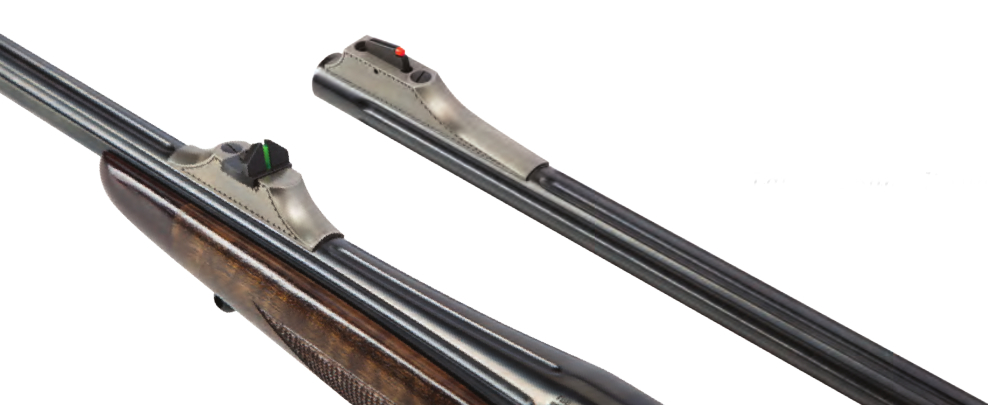
The barrel length for the SR30N Classic Concord is 19.7″/50cm whilst the barrel length for the SR30 version is 22.8″/58cm. Approximate weight is 6.8lb/3.1kg.
Heym SR30 Super Classic

The Heym SR30 Super Classic is a slightly heavier and longer barreled rifle similar to the SR30 Premium. The rifle features two leaf express sights and a barrel band mounted front sling swivel. The barrel length is 23.6″/60cm in both SR30N and SR30G models. Approximate weight is 7.9lb/3.6kg. This rifle would be an excellent candidate for use with heavy magnum calibers such as the .375 Ruger.
Heym SR30 Royal

As the name Royal suggests this model of the SR30 is provided with luxury artistic decoration to turn it into a sporting rifle work of art. The rifle illustrated is fitted with the single set trigger option as can be seen by its different appearance to the “shotgun” trigger equipped rifles pictured above and below it. There are a range of options for this model listed in the Heym Catalog on pages 28 and 29.

Barrel length is 19.7″/50cm for the SR30N Royal, 22.8″/58cm for the SR30G Royal, and weight is approximately 6.8lb/3.1kg.
Heym SR30 Grand Royal

The Heym SR30 Grand Royal is the most luxurious of all of the SR30 models and it can be ordered with a great many options which can be found in the Heym Catalog on pages 30 and 31. These options include the highest grades of walnut stock wood, engraving and gold inlays.
Barrel length for the SR30N version is 21.7″/55cm and for the SR30G it is 23.6″/60cm. Weight is approximately 7.9lb/3.6kg
Conclusion
The Heym SR30 is arguably not only one of the best straight pull rifles on the market, but it is one of the best production bolt action rifles in the world. The rifle is a tribute to Heym’s long gunmaking heritage that goes all the way back to 1865: a heritage that has seen the company as a pioneer of the three barreled drilling, and as a highly respected maker of double rifles, especially for dangerous game. This is the company that makes the Ralf Martini designed Heym Express Rifle that has already made its mark on the game fields of Africa in the hands of professional hunters and trophy hunters alike. The SR30 represents not innovation for innovation’s sake, but a re-birth of the straight pull bolt action in a new and refined design that merges the accuracy of the turn bolt design with the ease and speed of the straight pull action. It blends the highest level of safety with speed that a turn bolt action cannot match.
The base models of the Heym SR30 are affordable, and offer German excellence in design and engineering. Is a Heym SR30 for you? If you are looking for a rifle that can use full power bottle-necked rifle cartridges, provide minute of angle accuracy or perhaps even better, and a reloading speed almost equal with a lever action, then it quite possibly is.
Heym offer a range of European rifle-scope mounts for the SR30, but I would personally choose the American Talley quick detachable steel bases and rings. You will find the Talley bases for the Heym SR30 if you click here. And you will find suitable quick detachable Talley double lever rings if you click here.
To appreciate the full range of options for the Heym SR30 it is best to browse through the Heym catalog which you’ll find if you click here. The catalog is currently only available in German but the diagrams are easy to understand, and if you are seriously considering purchase of a rifle no doubt Heym USA will be happy to answer your questions. The section of the catalog on the SR30 begins on page 20.
If you would like to look at the technical information about the SR30 you will find the owner’s manual in PDF format if you click here. (The English language section begins on page 13, and French on page 24.)
The Heym SR30 has already established a name for itself in Europe as one of the best straight pull hunting rifles extant. We hope it will soon be discovered by hunters and shooters around the world.

(All pictures courtesy Heym except as otherwise marked).

Jon Branch is the founder and senior editor of Revivaler and has written a significant number of articles for various publications including official Buying Guides for eBay, classic car articles for Hagerty, magazine articles for both the Australian Shooters Journal and the Australian Shooter, and he’s a long time contributor to Silodrome.
Jon has done radio, television, magazine and newspaper interviews on various issues, and has traveled extensively, having lived in Britain, Australia, China and Hong Kong. His travels have taken him to Indonesia, Israel, Italy, Japan and a number of other countries. He has studied the Japanese sword arts and has a long history of involvement in the shooting sports, which has included authoring submissions to government on various firearms related issues and assisting in the design and establishment of shooting ranges.




